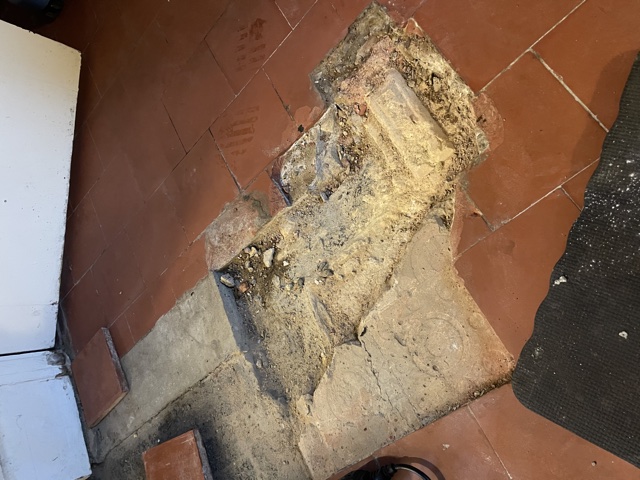Grout restoration and recoloring can be a major concern whether you just bought an older home or have developed dirty, dingy lines between your tiles over time. Grout is not just the glue that holds your tiles together; it can also be an important decorative element in your floors and walls. Unfortunately, grout is also prone to absorbing liquids and aging as it comes into contact with air, water and chemicals, which can result in an unsightly appearance.
Stained and discolored grout is particularly frustrating because it can poorly affect the visual appearance of the space in such a dramatic fashion. Fortunately, as you’ll find out below, there are several DIY methods ranging from the cheap and easy to the slightly more expensive that anyone can try to restore their gout to its former glory.
What You'll Need:
- Water
- Vinegar
- Heavy-duty cleaner
- Acid-based cleaner
- Grout dye
- Grout Respirator
Simple Fixes: Vinegar and Water
If you have a simple case of grout discoloration that has resulted from stagnant water in the bathroom or a spill in the kitchen, a first line of defense is a solution of water and vinegar. Mix one part warm water with one part vinegar in a bucket, and scrub the affected area with a soft brush or sponge. Repeat as necessary, then rinse and dry.
Other Options: Chemicals Cleaners
For severely discolored grout, chemical solvents might be the answer to restoring the grout to its original color. Start off with heavy-duty cleaners intended for removing rust and calcium deposits, like those available at most grocery stores. Scrub carefully without damaging the tiles. If this doesn’t do the trick, kick it up a notch with a powerful acid-based cleaner. When using this type of cleaner, be cautious: wear rubber gloves and make sure you have adequate ventilation. You’ll also want to test these cleaners on a small piece of tile first to make sure they won’t be damaged.
Grout Dyes
Still can’t get that grout white, light-brown or any other desired color? Try one of the grout dyes that are readily available at hardware stores. If you don’t have the time or energy to replace the grout completely, choose one of these colorants (available in white, gray and many other colors) to brighten up the appearance of your floor. Start by thoroughly cleaning and drying the entire working surface. Then carefully apply the colorant to the grout (avoiding tiles) with a brush, let dry and enjoy. A good quality colorant can retain its pigment for over 10 years.
Repairing Cracked Grout
If your grout is also cracking, flaking and crumbling, then it can’t just be restored: it will need to be replaced. First, verify that your damaged grout isn’t a sign of severe water damage under the tiles, which would necessitate a much more intensive job. If the floor or wall is fine, then use a utility knife to scrape out the old, damaged grout. Mix up the new grout and spread it in between the tiles with a trowel, quickly wiping the excess away with a sponge. Make sure to take care of any drips within 30 minutes so that the grout doesn’t set on the tile.
Source: www.DoItYourself.com













